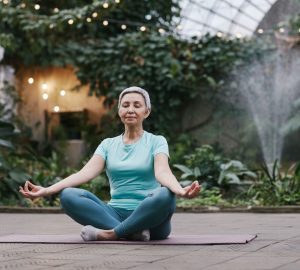Embarking on a fitness journey often involves exploring unconventional paths to enhance both the physical and mental aspects of the workout experience. In recent years, an intriguing avenue has emerged that challenges traditional perceptions: the intersection of marijuana and exercise. As attitudes toward cannabis continue to evolve, a growing body of research suggests that incorporating marijuana into your fitness routine can yield surprising benefits. In this article, we’ll share the unique ways how marijuana can improve your workout when used responsibly, elevating both the mind and body to new levels of performance and enjoyment. So, let’s explore how this controversial plant might just be the unexpected ally you need on your fitness journey.
Once thought of as an underground remedy, or worse, an illicit drug, medical and recreational cannabis is an ever growing popular, and now legal substance. Marijuana became legal throughout Canada on Oct 17th, 2018, and according to Statistics Canada, cannabis flower sales reached $43 million during the first two weeks following legalization.
Almost a month later on November 20th, 2018, our southern neighbors also made history, when Massachusetts marijuana dispensaries held the first ever recreational cannabis sales on America’s east coast, with first day sales totalled at $400,000. Slowly but surely, cannabis continues a push toward mainstream acceptance, and many who were skeptical about the potential benefits it may offer when illegal are now wondering how marijuana can improve your workout.
First and foremost, medical or otherwise, cannabis effects vary person to person. Do not expect marijuana alone to help you become a triathlete. There is no one size fits all when it come to cannabis and your fitness routine. What may work for you won’t always work for others.
With that said, this article intends to highlight studies regarding physical exertion and cannabis, and the potential efficacy it may offer for workout enthusiasts.
Have you ever gone a long run, swim, or other activity and felt “in the zone,” in a groove where it’s almost easier to keep going than stop?
This euphoric release is the runner’s high, and many laud it for helping them persist through strenuous workouts. Once believed to be the work of endorphins, the reason behind the runner’s high actually has a cannabis connection, your endocannabinoid system, or ECS. The ECS has receptors throughout your body, and it regulates activities like mood, appetite, pain sensation, memory, and sleep.
While endorphins do get released during strenuous activity, it is specifically anandamide, a body made neurotransmitter that stimulates the ECS. Anandamide can create a feeling of euphoria, improve appetite and have a calming, anti anxiety effect.
While cannabis won’t make this runner’s high last forever when you workout, some believe the relationship between cannabis, the runner’s high, and the ECS means it’s not out of the question.
Dr. Bonn-Miller, an adjunct assistant professor at the University of Pennsylvania and cannabinoid researcher, told the New York Times, “There’s a lot of overlap in terms of the pathways that are activated between what’s known as a runner’s high and the high that comes from THC….Both of those involve activation of the endocannabinoid system, so it’s not too surprising that THC might be used to enhance the runner’s high that’s gained from endurance exercise.”
Dr. Frank D’Ambrosio of Los Angeles, California described to Civilized Media that, “Cannabis is not only going to stimulate the receptors that allow you to get high. It’s also going to lower your blood pressure. It’s going to lower your heart rate. It’s going to help your muscles recover.”
As you can see, Cannabis chemicals cause more bodily effects than simply intermingling with the runner’s high. Pain management and muscle soreness are a big problem, and one of the biggest reasons athletes from the UFC to BIG 3 basketball fought for their respective organizations to allow CBD oil, and it’s anti inflammatory benefits.
CBD can be found throughout cannabis, and used without other cannabinoids like THC, which create the psychoactive high. This makes CBD a great alternative for those who don’t want to use cannabis to the full extent, but still want to reap in the benefits for fighting muscle soreness. While CBD may not make you better at what you do, if it can help UFC fighters like Nick Diaz feel better after getting their stomach kicked in, it certainly can help you recover post workout.
One of the biggest misconceptions about cannabis is that it is truly bad for your lungs. While common adage says inhaling any combustible materials isn’t healthy, sometimes common adage must be re examined when new studies and results appear.
In terms of cannabis smoke, when examined in a longitudinal, two decade long study with tobacco and other drug use controlled, “occasional and low cumulative marijuana use was not associated with adverse effects on pulmonary function.” They also found that those who habitually used cannabis tended to have longer lung function.
This disparity can be explained by a terpene within cannabis called pinene. Terpenes are the natural oils that give off cannabis’ unique scent. Pinene, known for its pine tree like scent, was found in a 2011 study to open up asthma patients upper respiratory tracks at low exposure, in line with the previous studies findings of low volume use having little adverse effect on lung function.
Cannabis smoke seemingly expands one’s lung capacity when used in small doses, which not only helps those who are asthmatic, but those who wish to run and swim for longer distances, or simply workout at longer intervals.
The above benefits I outlined may or may not reflect in your own experiences with cannabis regarding how marijuana can improve your workout. As I mentioned before, people experience and react to cannabis differently. If you have a cannabis workout experience, feel free to share it below!
About the Author
Chris Matich is a professional writer, journalist, and editor living in Pittsburgh, PA. Chris blogs for Schenley.net. His writing interests include LGBT+ issues, sports writing, and blogging. Chris currently writes about web optimization, blogging practices, medical cannabis, and cannabis lifestyle. He writes fiction and creative nonfiction in his spare time. Linkedin, Twitter








